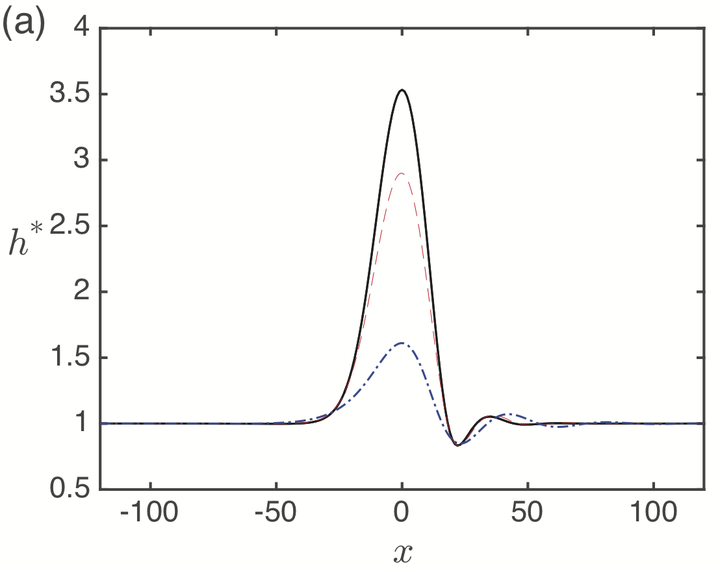Two-dimensional pulse dynamics and the formation of bound states on electrified falling films

Abstract
The flow of an electrified liquid film down an inclined plane wall is investigated with the focus on coherent structures in the form of travelling waves on the film surface, in particular, single-hump solitary pulses and their interactions. The flow structures are analysed first using a long-wave model, which is valid in the presence of weak inertia, and second using the Stokes equations. For obtuse angles, gravity is destabilising and solitary pulses exist even in the absence of an electric field. For acute angles, spatially non-uniform solutions exist only beyond a critical value of the electric field strength; moreover, solitary-pulse solutions are present only at sufficiently high supercritical electric-field strengths. The electric field increases the amplitude of the pulses, can generate recirculation zones in the humps and alters the far-field decay of the pulse tails from exponential to algebraic with a significant impact on pulse interactions. A weak-interaction theory predicts an infinite sequence of bound-state solutions for non-electrified flow, and a finite set for electrified flow. The existence of single-hump pulse solutions and two-pulse bound states is confirmed for the Stokes equations via boundary-element computations. In addition, the electric field is shown to trigger a switch from absolute to convective instability, thereby regularising the dynamics, and this is confirmed by time-dependent simulations of the long-wave model.